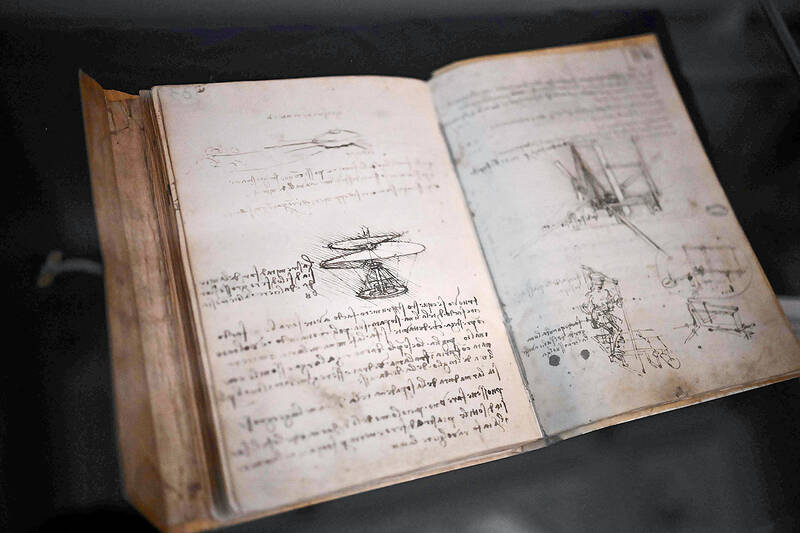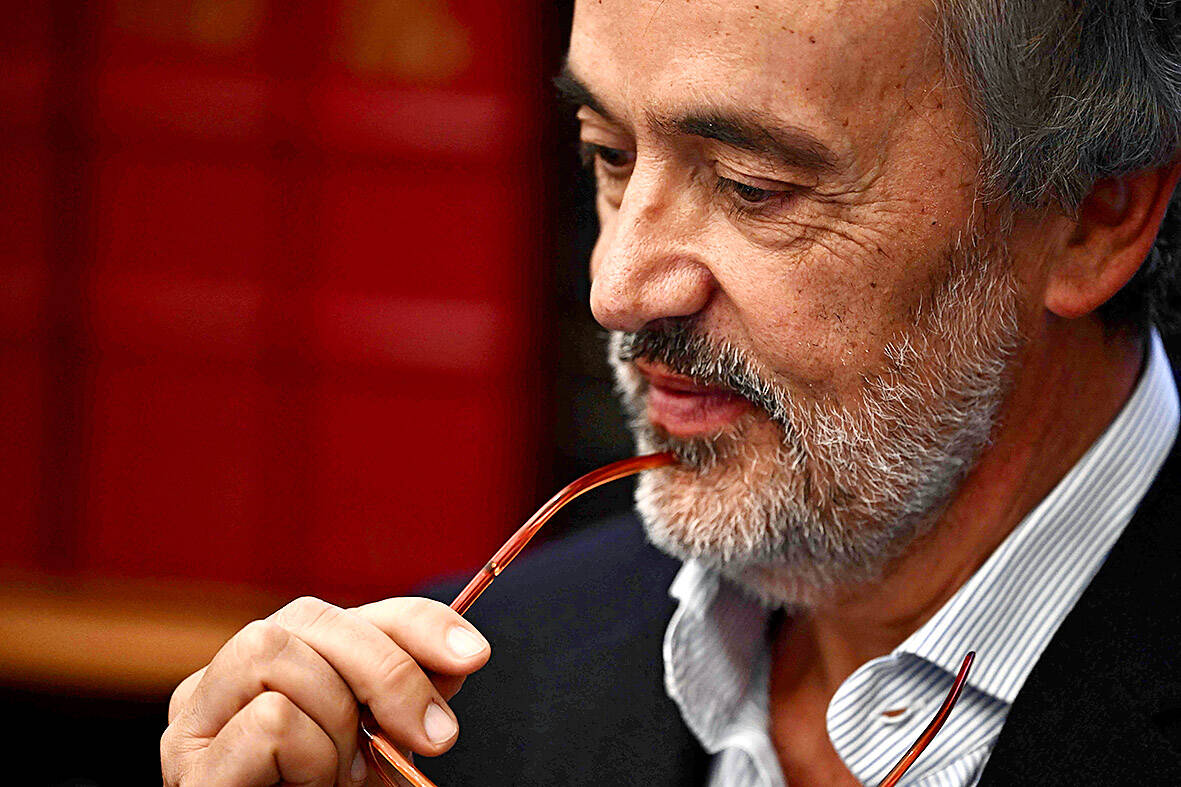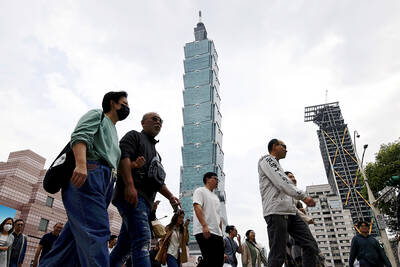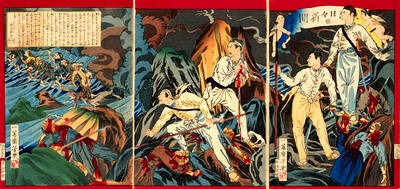Leonardo da Vinci, the painter of the Mona Lisa and a symbol of the Renaissance, was only half-Italian, his mother a slave from the Caucasus, new research revealed on Tuesday.
Da Vinci’s mother had long been thought a Tuscan peasant, but University of Naples professor Carlo Vecce, a specialist in the Old Master, believes the truth is more complicated.
“Leonardo’s mother was a Circassian slave... taken from her home in the Caucasus Mountains, sold and resold several times in Constantinople, then Venice, before arriving in Florence,” he said at the launch of a new book.

Photo: AFP
In the Italian city, she met a young notary, Piero (Peter) da Vinci, “and their son was called Leonardo.”
The findings of Vecce, who has spent decades studying da Vinci and curating his works, are based on Florence city archives.
They have formed the basis of a new novel — The Smile of Caterina, the mother of Leonardo — while also shedding new light on the artist himself.

Photo: AFP
Any new discovery about da Vinci is hotly contested by the small world of experts who study him, but Vecce insists the evidence is there.
Among the documents he found is one written by da Vinci’s father himself, a legal document of emancipation for Caterina, “to recover her freedom and recover her human dignity.”
‘SPIRIT OF FREEDOM’
This document is dated 1452, and was presented Tuesday at a press conference at the headquarters of publishing house Giunti in Florence.
It was written by “the man who loved Caterina when she was still a slave, who gave her this child named Leonardo and (was) also the person who helped to free her,” Vecce said.
His assertion offers a radical change of perspective on da Vinci, who was believed to have been the product of an affair between Peter da Vinci and a different woman, young Tuscan peasant Caterina di Meo Lippi.
Born in 1452 in the countryside outside Florence, da Vinci spent his life traveling around Italy before dying in Amboise, France in 1519, at the court of King Francis 1. Vecce believes the difficult life of his “migrant” mother had an impact on the work of her brilliant son.
“Caterina left Leonardo a great legacy, certainly, the spirit of freedom,” he said, “which inspires all of his intellectual scientific work.”
Da Vinci was a polymath, an artist who mastered several disciplines including sculpture, drawing, music and painting, but also engineering, anatomy, botany and architecture.
“He doesn’t let anything stop him,” Vecce said.
Some may consider the idea that this epitome of a “Renaissance man” was the product of such a union too good to be true.
But Paolo Galluzzi, a da Vinci historian and member of the prestigious Lincei scientific academy in Rome, said it is “by far the most convincing.”
Galluzzi highlighted the quality of the documents discovered by his colleague, adding that there “must remain a minimum of doubt, because we cannot do a DNA test.”
Galluzzi said he was also not surprised.
The period into which da Vinci was born marks “the beginning of modernity, the exchanges between people, cultures and civilizations which gave birth to the modern world,” he said.

In the March 9 edition of the Taipei Times a piece by Ninon Godefroy ran with the headine “The quiet, gentle rhythm of Taiwan.” It started with the line “Taiwan is a small, humble place. There is no Eiffel Tower, no pyramids — no singular attraction that draws the world’s attention.” I laughed out loud at that. This was out of no disrespect for the author or the piece, which made some interesting analogies and good points about how both Din Tai Fung’s and Taiwan Semiconductor Manufacturing Co’s (TSMC, 台積電) meticulous attention to detail and quality are not quite up to

April 21 to April 27 Hsieh Er’s (謝娥) political fortunes were rising fast after she got out of jail and joined the Chinese Nationalist Party (KMT) in December 1945. Not only did she hold key positions in various committees, she was elected the only woman on the Taipei City Council and headed to Nanjing in 1946 as the sole Taiwanese female representative to the National Constituent Assembly. With the support of first lady Soong May-ling (宋美齡), she started the Taipei Women’s Association and Taiwan Provincial Women’s Association, where she

Chinese Nationalist Party (KMT) Chairman Eric Chu (朱立倫) hatched a bold plan to charge forward and seize the initiative when he held a protest in front of the Taipei City Prosecutors’ Office. Though risky, because illegal, its success would help tackle at least six problems facing both himself and the KMT. What he did not see coming was Taipei Mayor Chiang Wan-an (將萬安) tripping him up out of the gate. In spite of Chu being the most consequential and successful KMT chairman since the early 2010s — arguably saving the party from financial ruin and restoring its electoral viability —

It is one of the more remarkable facts of Taiwan history that it was never occupied or claimed by any of the numerous kingdoms of southern China — Han or otherwise — that lay just across the water from it. None of their brilliant ministers ever discovered that Taiwan was a “core interest” of the state whose annexation was “inevitable.” As Paul Kua notes in an excellent monograph laying out how the Portuguese gave Taiwan the name “Formosa,” the first Europeans to express an interest in occupying Taiwan were the Spanish. Tonio Andrade in his seminal work, How Taiwan Became Chinese,